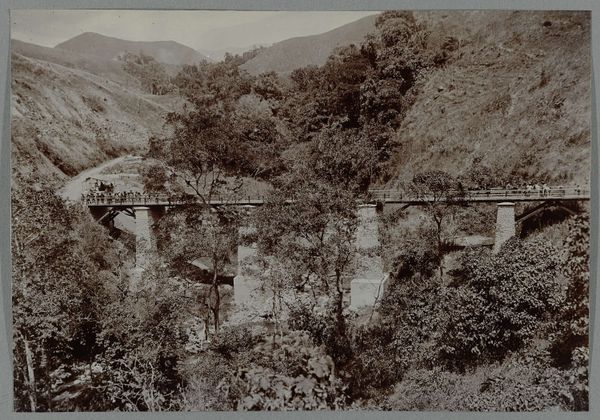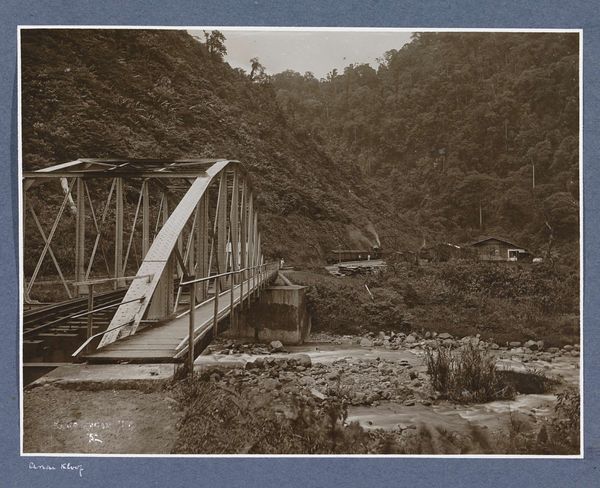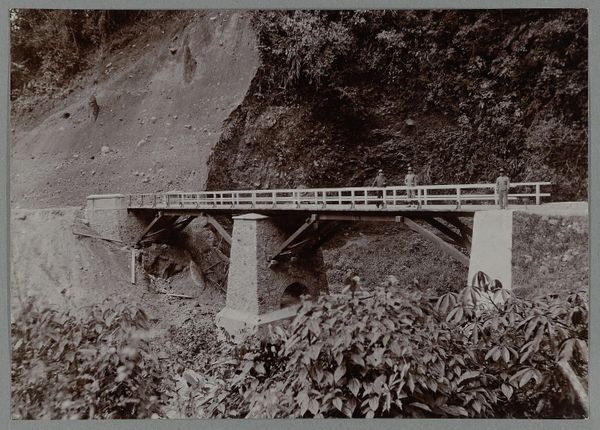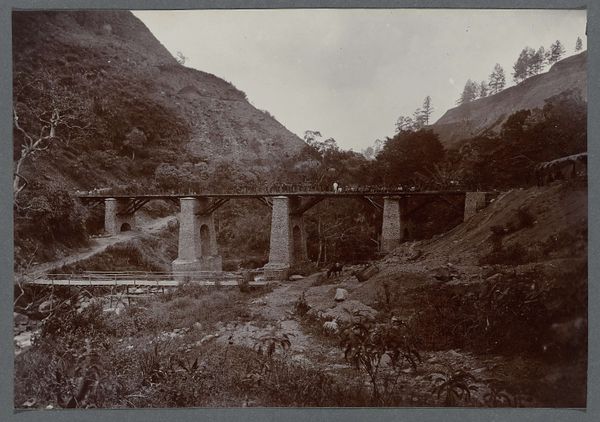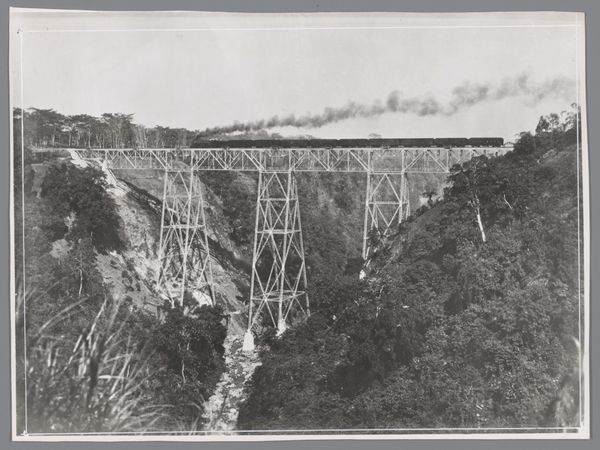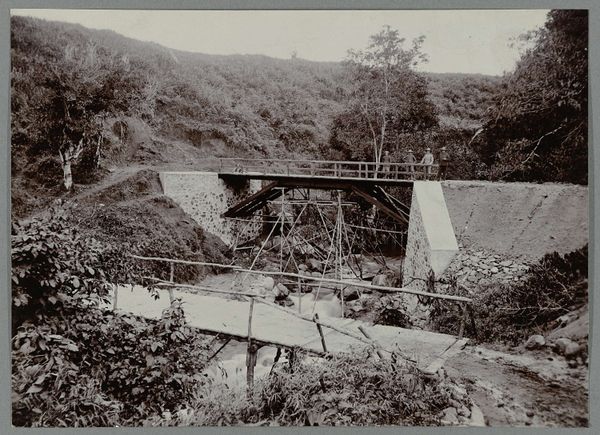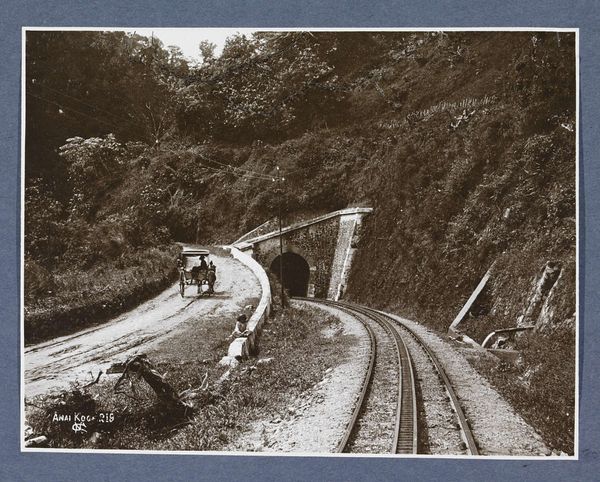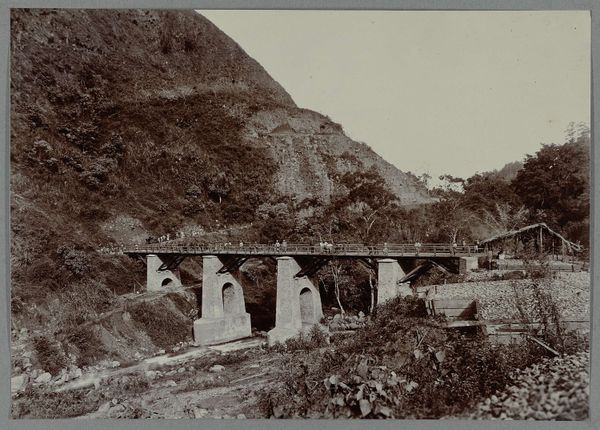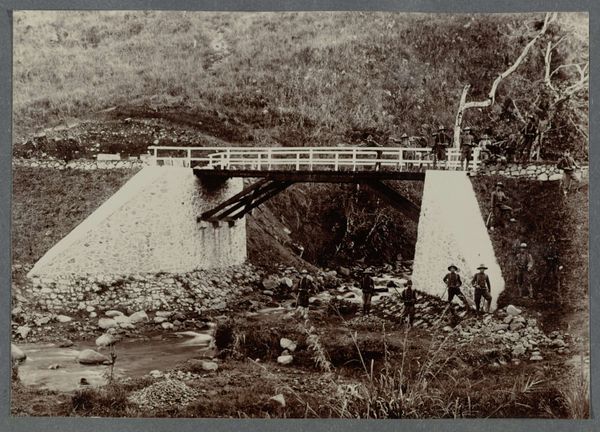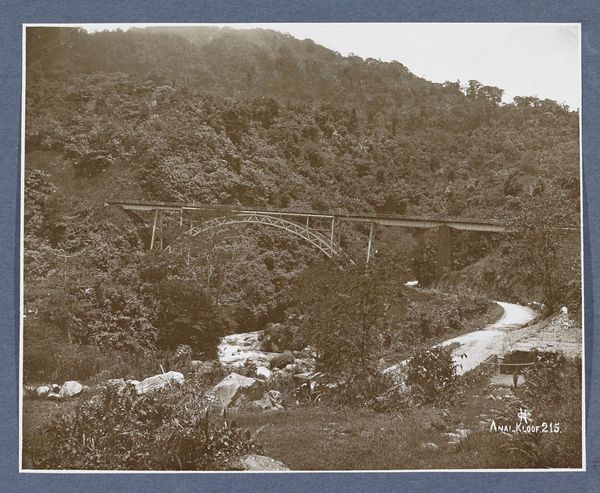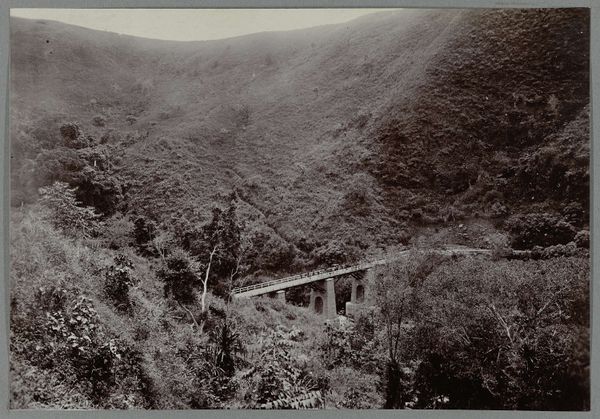
Trein op een spoorbrug bij Titi Paja Kombo op Sumatra c. 1900 - 1920
0:00
0:00
photography
#
landscape
#
photography
#
orientalism
#
realism
Dimensions: height 216 mm, width 286 mm
Copyright: Rijks Museum: Open Domain
Curator: This photograph, titled "Trein op een spoorbrug bij Titi Paja Kombo op Sumatra," or "Train on a Railway Bridge near Titi Paja Kombo on Sumatra", was captured by Christiaan Benjamin Nieuwenhuis sometime between 1900 and 1920. Editor: My first impression is of contrasts. The intricate metal bridge and chugging train jut starkly against the wild, overgrown landscape of what I presume is Sumatra. There's something almost unsettling about it. Curator: Unsettling because it so vividly illustrates the colonial project. Nieuwenhuis documented the expansion of infrastructure in the Dutch East Indies. Railroads were a key element in resource extraction and control. Editor: Exactly. It’s a study in power. The machine—the train, the bridge—cutting through and dominating the natural environment. Consider whose labor built that bridge, and who benefitted from the train’s cargo. Curator: We must remember that Nieuwenhuis, like many photographers of his time, presented a curated view. The images were often used to promote the idea of progress and the benefits of colonial rule. It's a perspective firmly rooted in its era. Editor: Absolutely, and one that requires critical analysis. We see a visual representation of orientalism. The exoticizing of the "other", in this case the landscape, to emphasize the accomplishments of the colonizer. Curator: Look closely at the details, however. The soft light, the meticulous rendering of the jungle foliage. Despite the imperial undertones, Nieuwenhuis displays photographic skill, perhaps genuine admiration for the landscape. Editor: But admiration doesn’t absolve him—or us—from interrogating the power dynamics at play. This photograph acts as a valuable historical document and a stark reminder of colonialism's impact. The contrast of nature versus machine tells us the story from both the physical and social level. Curator: Yes, its historical importance cannot be denied, prompting reflection on the enduring legacy of colonialism and its effects. Editor: Indeed, prompting an acknowledgment of both the visual beauty and the complex narrative of control.
Comments
No comments
Be the first to comment and join the conversation on the ultimate creative platform.
